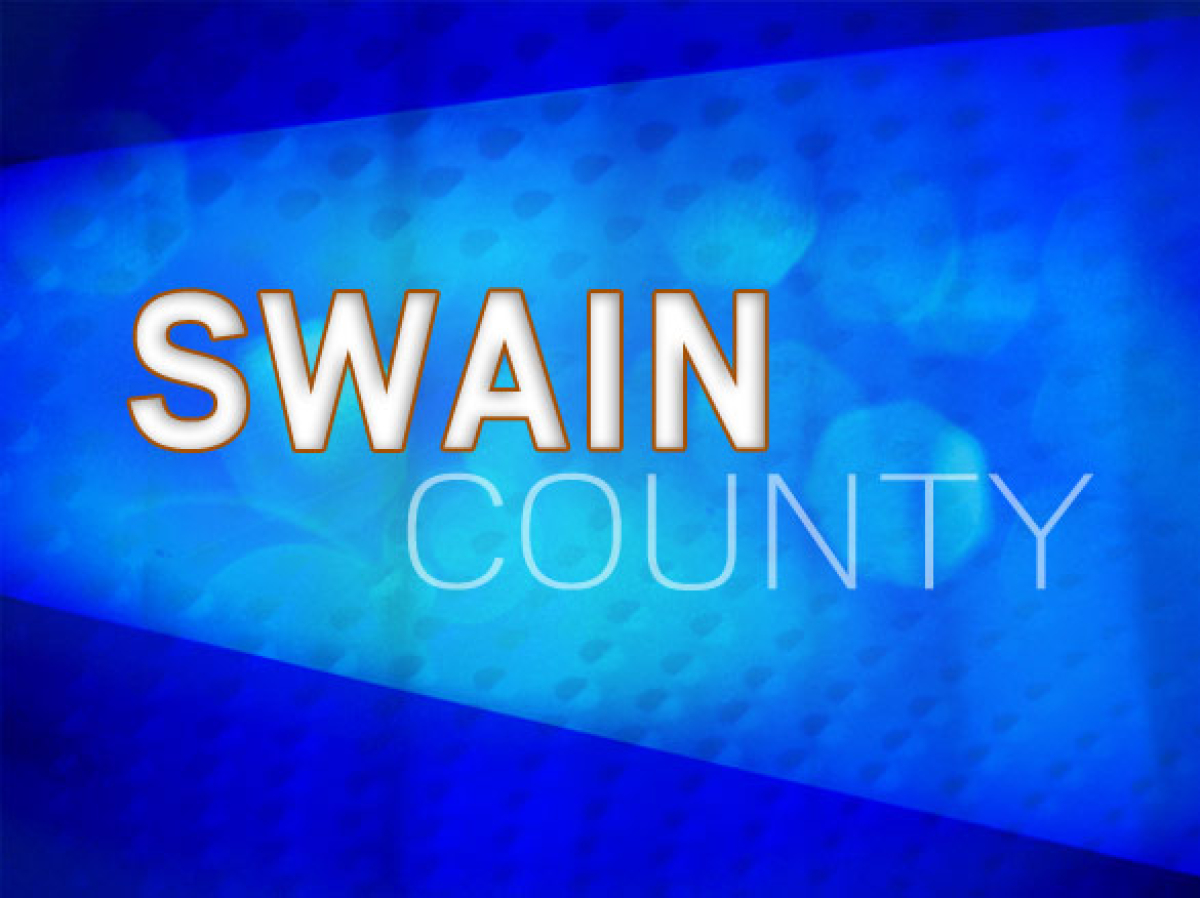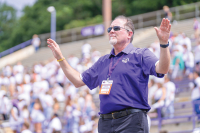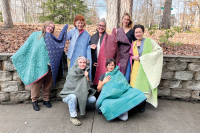Swain teens push for youth center

Students in rural America already face many of the challenges experienced by their urban cousins — albeit with fewer resources to overcome them — but a group of Swain County teenagers want to change that by asking commissioners for a youth center.
“I feel like it’d be a safe area for kids to go wait for their parents, because not all parents get off of work at the same time as school ends,” said Amber Hinnant, a 15-year-old who will be a sophomore at Swain County High School this fall. “It would be a positive atmosphere for teens and others to socialize with their peers.”

Amber Hinnant
Hinnant, an enrolled member of the Eastern Band of Cherokee Indians, lives in Birdtown and hopes to major in biochemistry at N.C. State University, fulfilling her dreams of one day becoming a psychiatrist.
Thus far, Hinnant’s managed to avoid the three-headed monster of poverty, crime and drugs that present obstacles to educational attainment for some of America’s school-age children.
Related Items
“Sometimes they choose to do drugs instead,” she said. “They go down the wrong track.”
According to youth.gov , for every $1 invested in afterschool programs, the community experiences at least $3 in savings by reducing juvenile delinquency and improving academic performance, which increases earning potential.
In 2022, only 24% of Swain County students in grades 3 through 8 earned career- and college-ready scores in reading, and only 27% met the mark in math. Less than 80% of high school students graduate on time, far below the state goal of 95%, and 22% of students are considered chronically absent, double the state goal of 11%.
Afterschool programs provide academic support, reduce dropout rates and aid in social and emotional learning while supporting working families by ensuring the safety of their children during those critical afterschool hours when many moms and dads are still on the job.
With the skyrocketing cost of childcare, school holidays and summer break can become nightmarish financial fiascoes for parents who still have to put food on the table.
By most measures, Swain County’s poverty rate isn’t outrageously high — between 15 and 18%. Although it’s above the state average of 14%, it’s nowhere near the top of the list. Bladen County, at 29%, holds that dubious distinction but there’s significant room for improvement across Western North Carolina. Union County’s poverty rate, lowest in the state, is 7%.
“I’d say I’m very lucky. My parents both have good jobs, but I’d say [poverty] is a pretty big problem for the majority of people living here,” said Audrey Zelenka, president of Swain County High School’s student council. “A youth center, in my opinion, would probably help students get different classes that they may not be able to get in school, like different educational opportunities that a school can’t provide.”

Audrey Zelenka
Zelenka is a 17-year-old senior-to-be who lives in Greasy Branch, near Lake Fontana. She wants to study public health, which would come in handy for combating the nation’s continuing opioid addiction crisis.
The rural character of the opioid epidemic is readily apparent in Swain County, which in 2021 had one of the highest drug overdose death rates in the west. In 2022, Swain County had one of the highest rates of drug overdose emergency room visits in the entire state .
A 2022 report by the National Institutes of Health showed that 52% of high school seniors across the country were consuming alcohol, 31% were using some form of cannabis and 27% were vaping nicotine.
“I know the school has had a problem with vaping on campus. I feel like a youth center may be able to provide education for students and kids at a younger level, to help them understand that it’s not cool,” Zelenka said. “It’s not good for you. It’s not good for your health in the future, and it’s an expensive habit.”
The real problem is, there aren’t enough options for Swain County teens, and the ones that are available are either too far, too full or too expensive to help those that need it most.
Max Wilmot is a 16-year-old rising junior from Bryson City. He wants to study law, criminology or forensic science. Like Hinnant and Zelenka, he’s also a member of student council and thinks that when students are unsupervised after school is when the trouble really begins.

Max Wilmot
“That’s really when kids will show their true colors and try to experiment with different things,” Wilmot said. “And they’ll either learn their lesson from that or continue down a bad path.”
While many of the challenges present for Swain County students aren’t unique, at least one of them is.
This past June, the Smoky Mountain Times reported that due to a variety of factors, Swain County has far more children in the foster care system — some of them for nearly a decade, formerly sleeping in hotel rooms or on air mattresses in conference rooms of county buildings — than surrounding counties do.
That kind of instability makes educational success more difficult. A 2001 report by the Washington State Institute for Public Policy says that children in foster care score 15 to 20% lower on statewide achievement tests than their non-foster peers. Since then, things haven’t improved — a 2020 report by Partners for our Children says that students in foster care meet state standards at less than half the rate of their non-foster peers.
A youth center, advocates say, would help alleviate many of the challenges expressed by Hinnant, Zelenka and Wilmot. Right now, they’re urging Swain County residents to complete one of three surveys — for students, parents and community members — so they can present their findings to the Swain County Board of Commissioners on Aug. 1.
The surveys are tailored to each group and ask questions about what the biggest problems in Swain County are and what a successful youth center might look like.
Wilmot isn’t really concerned with his fate; like many of his peers, he’s staying out of trouble and has a bright future ahead of him, but he worries about those who will come after, like his two younger brothers.
“A youth center would allow students to have a place to go after school and get a more individual approach to their education and just be able to, like, make more connections and friends and keep off of drugs and away from crime,” he said. “If we have one youth center, then I feel like as we use it more, then it can start to expand and then maybe there’s more, and then we just have more of that individual attention to education with the upcoming generation.”
Swain County Schools’ Superintendent Mark Sale did not return a call for comment.
Take the survey
If you’re a resident of Bryson City or Swain County, a group of concerned citizens wants to hear from you about the possibility of establishing an after-school/weekend/non-school day youth center for local students. Three different surveys are available — one for students, one for parents and one for the community at large. Results will be used during an Aug. 1 presentation to Swain County commissioners.
Students : surveymonkey.com/r/CHSHFYS
Parents: surveymonkey.com/r/CZQSLZD
Community: surveymonkey.com/r/CZTGPLH
Be heard
Community members will present to county commissioners the results of a survey on establishing a youth center for Bryson City and Swain County students during an upcoming workshop. The meeting is open to the public.
Time: 10 a.m.
Date: Tuesday, Aug. 1
Location: Swain County Administration Building, 50 Main St, third floor, Bryson City









